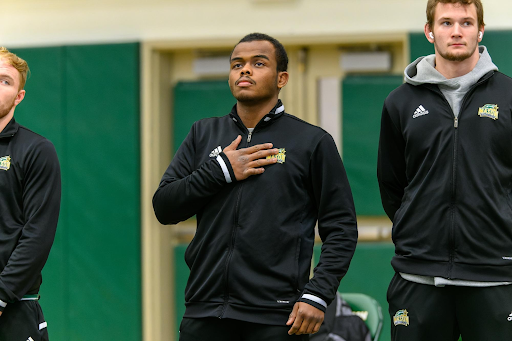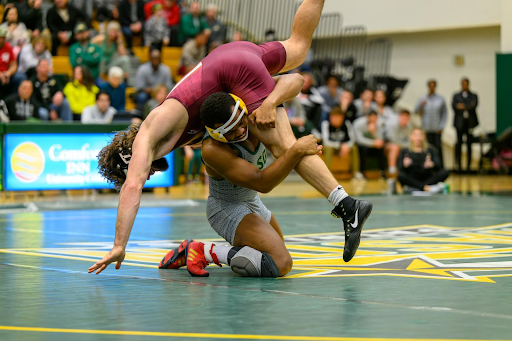
Imagine stepping into competition for a big match, only to feel a sharp pain in your knee. For many athletes, this is reality — even for those at the top of their sport. I spoke with Division 1 (George Mason University) State Champion Loranzo Rajaonarivelo to learn how athletes can prevent injuries and recover faster. Loranzo is also a Wakefield Alumni (2019) and is a State Champion for Wakefield Wrestling!
What injuries are most common in sports?
“In sports — especially wrestling and combat sports — the most common injuries I see involve the shoulders, knees, and ankles. For knees and ankles, we’re usually talking about sprains and strains, often caused by overuse or awkward positions. Shoulders can experience similar sprains and strains, usually affecting the surrounding muscles like the biceps, pecs, and deltoids, rather than the joint itself. Occasionally, there are more severe cases involving tears. Ligaments around the knees and ankles can also be affected, and meniscus tears are another common injury, though these are often easily fixed.”
How can these injuries affect athletes’ lives?
“There’s a difference between being injured and being hurt. I categorize injuries as things that impair your ability to continue properly — for example, a meniscus tear that prevents you from getting into your stance or shooting. That’s an injury. A normal sprain or strain might allow you to wrestle through it or adapt your style. Stubbing your toe? That’s just being hurt, not injured. It all depends on the degree of injury. Personally, the most my injuries have impacted my life was when I was in a cast or had surgery, but it didn’t drastically affect my quality of life — I was back within a few weeks or months.”

How can athletes avoid these injuries?
“Injury prevention is all about prehab — pre-rehabilitation. If you’ve been injured in a specific spot before, it’s best to strengthen that area continuously. In college, I was prone to ankle and knee injuries, so I had a routine that started with joint work to keep my joints healthy. Then, I would do dynamic stretching and a series of exercises or lifts to prevent injuries in those ‘hot spots.’ Resistance bands and lightweight, high-rep exercises were common. The main goal of lifting wasn’t just strength; it was to keep me on the mat or field longer.”
Is recovery important for injury prevention?
“Absolutely. Recovery is crucial. Training creates micro-tears in muscles, and without proper rest and nutrition, your body can’t recover, which increases injury risk. For example, if you suddenly try to run a marathon without prior training, muscles like your anterior tibialis in the shin will develop micro-tears, leading to shin splints. Recovery allows your body to adapt and prevents cumulative stress injuries.”
What prehab or recovery methods would you suggest athletes do?
“Start with mobility work to keep joints healthy and ensure a full range of motion. Flexibility alone isn’t enough; joint control matters for injury prevention. For stabilization, resistance band exercises like monster walks and sidewalks are effective. For example, placing a band above your knees in a squat or wrestling stance and marching forward and sideways strengthens hips and knees. Your lower body is interconnected, so strong hips and ankles stabilize your knees. Stability is key — like building a house, you need a strong foundation.”
Anything else you’d like to add?
“Train hard, but listen to your body. Eat leafy greens — they provide essential nutrients for muscle growth and function. Stay on top of prehab and lifting — lifting makes you more durable. Recovery is extremely important — techniques like contrast therapy (alternating hot and cold baths) and active recovery, like walking to get blood flowing, can help. There are some methods college athletes use that I can’t explicitly share due to rules, but these basics are crucial.”
Key Takeaway:
Whether you’re a seasoned athlete or just starting out, prioritizing prehab, recovery, and proper nutrition can keep you performing at your best and reduce the risk of injury. By learning from elite athletes like Loranzo Rajaonarivelo, you can stay proactive and avoid time on the sidelines — because prevention is always better than rehab.


